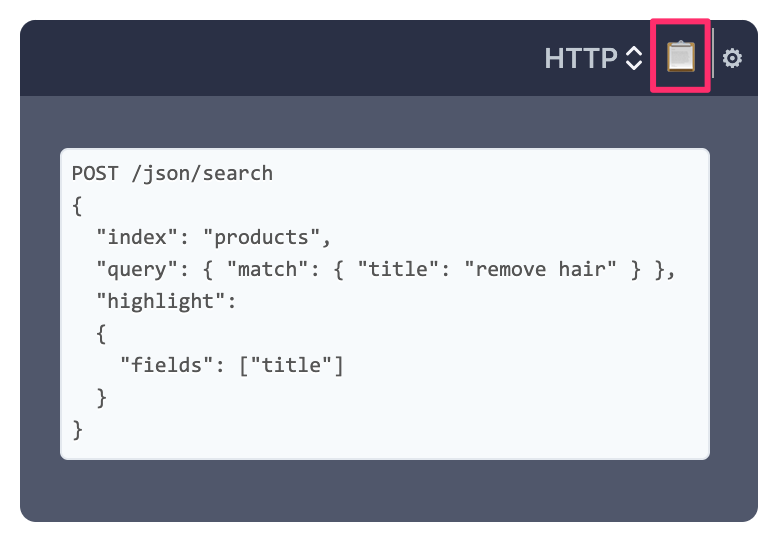Manticore Search is a database designed specifically for search, including full-text search.
Manticore was born in 2017 as a continuation of Sphinx Search. We took the best from Sphinx (C++ core and focus on low level data structures and fine-tuned algorithms), added a lot of new functionality, fixed hundreds of bugs, made it easier to use, kept it open source and made Manticore Search even more lightweight & extremely fast database for search.
- Over 20 full-text operators and over 20 ranking factors
- Custom ranking
- Stemming
- Lemmatization
- Stopwords
- Synonyms
- Wordforms
- Advanced tokenization at character and word level
- Proper Chinese segmentation
- Text highlighting
The native Manticore's syntax is SQL. It speaks SQL over HTTP and MySQL protocol. You can use your preferred mysql client to connect to Manticore Search server via SQL protocol in any programming language.
To provide more programmatic way to manage your data and schemas Manticore provides HTTP JSON protocol. It is very similar to the one from Elasticsearch.
You can create / update / delete indexes online as well as providing schemas in a configuration file.
Being written fully in C++ Manticore Search starts fast and doesn't take much RAM. Low-level optimizations give good performance.
After a new document is added or updated it can be read immediately.
We provide interactive courses for easier learning.
Manticore is not fully ACID-compliant, but it supports isolated transactions for atomic changes and binary logging for safe writes.
Data can be distributed across servers and data-centers. Any Manticore Search node can be both a load balancer and a data node. Manticore implements synchronous multi-master replication using Galera library which guarantees consistency between all data nodes and no data loss.
Manticore indexer tool and rich configuration syntax helps to sync existing data from MySQL, PostgreSQL, any database which speaks ODBC and any other technology which can generate a simple XML or CSV.
You can integrate Manticore Search with MySQL/MariaDB server via a FEDERATED engine or use Manticore through ProxySQL
Manticore has a special index type called "percolate" which implements search in reverse when you index your queries rather than data. It's an extremely powerful tool for full-text data stream filtering: just put all your queries in the index, process your data stream by sending each batch of documents to Manticore Search and you'll get only those back that match some of your stored queries.
Manticore's possible applications are not limited by, but include:
- Full-text search
- when used with small data volume you can benefit from powerful full-text search syntax and low RAM consumption (as little as 7-8 megabytes)
- when used with big data you can benefit from Manticore's high availability capabilities and ability to serve very large indexes, each taking hundreds of gigabytes of RAM
- Faceted search
- Geo-spatial search
- Spell correction
- Autocomplete
- Data stream filtering
The manual is arranged as a reflection of the most likely way you would use Manticore:
- starting from some basic information about it and how to install and connect
- through some essential things like adding documents and running searches
- to some performance optimization tips and tricks and extending Manticore with help of plugins and custom functions
Key sections of the manual are marked with sign ✔️ in the menu for your convenience since their corresponding functionality is most used. If you are new to Manticore we highly recommend to not skip them.
If you are looking for a quick understanding of how Manticore works in general ⚡ Quick start guide section should be good to read.
Each query example has a little icon 📋 in the top-right corner:

You can use it to copy examples to clipboard. If the query is an HTTP request it will be copied as a CURL command. You can configure the host/port if you press ⚙️.
We love search and we've made our best to make searching in this manual as convenient as possible. Of course it's backed by Manticore Search. Besides using the search bar which requires opening the manual first there is a very easy way to find something by just opening mnt.cr/your-search-keyword :

There are few things you need to understand about Manticore Search that can help you follow the best practices of using it.
- Real-time index allows adding, updating and deleting documents with immediate availability of the changes.
- Plain index is a mostly immutable data structure and a basic element used by real-time indexes. Plain index stores a set of documents, their common dictionary and indexation settings. One real-time index can consist of multiple plain indexes (chunks), but besides that Manticore provides direct access to building plain indexes using tool indexer. It makes sense when your data is mostly immutable, therefore you don't need a real-time index for that.
Manticore Search works in two modes:
- Real-time mode (RT mode). This is a default one and:
- allows managing your data schema online using SQL commands
CREATE/ALTER/DROP TABLEand their equivalents in non-SQL clients - in the configuration file you need to define only server-related settings
- allows managing your data schema online using SQL commands
- Plain mode allows to define your data schemas in a configuration file. It makes sense in two cases:
- when you only deal with plain indexes
- or when your data schema is very stable and you don't need replication (as it's available only in the RT mode)
You cannot combine the 2 modes and need to decide which one you want to follow. If you are unsure our recommendation is to follow the RT mode as if even you need a plain index you can build it with a separate plain index config and import to your main Manticore instance.
Manticore provides multiple ways and interfaces to manage your schemas and data, but the two main are:
- SQL. This is a native Manticore's language which enables all Manticore's functionality. The best practice is to use SQL to:
- manage your schemas and do other DBA routines as it's the easiest way to do that
- design your queries as SQL is much closer to natural language than the JSON DSL which is important when you design something new. You can use Manticore SQL via any MySQL client or [/sql](Connecting_to_the_server/SQL over HTTP.md#/sql-API.
- JSON. Most functionality is also available via JSON domain specific language. This is especially useful when you integrate Manticore with your application as with JSON you can do it more programmatically than with SQL. The best practice is to first explore how to do something via SQL and then use JSON to integrate it into your application.
Docker images of Manticore Search are publicly available on Docker Hub built from Manticore Search docker GitHub repository.
To fetch Manticore image execute:
docker pull manticoresearch/manticoreSee Using Manticore in Docker for more details about using Manticore in Docker.